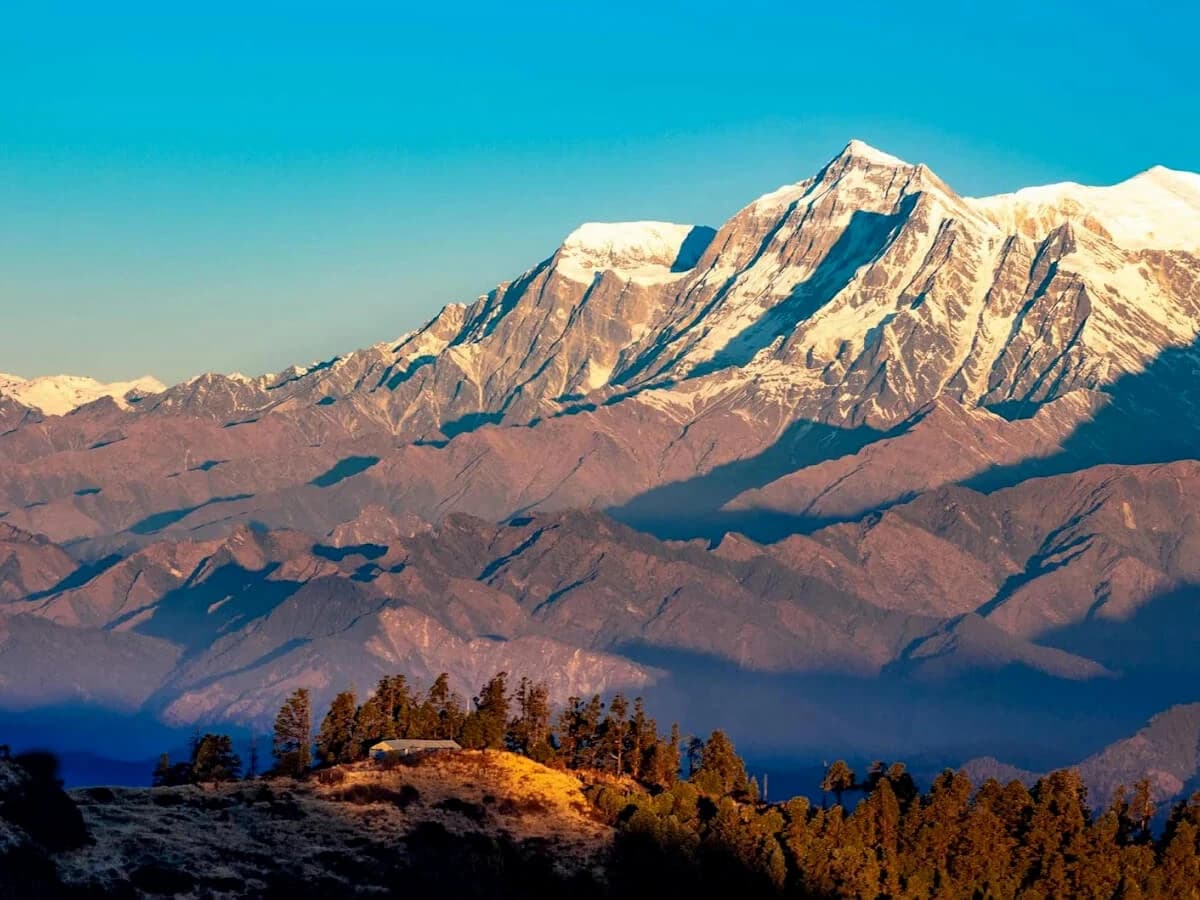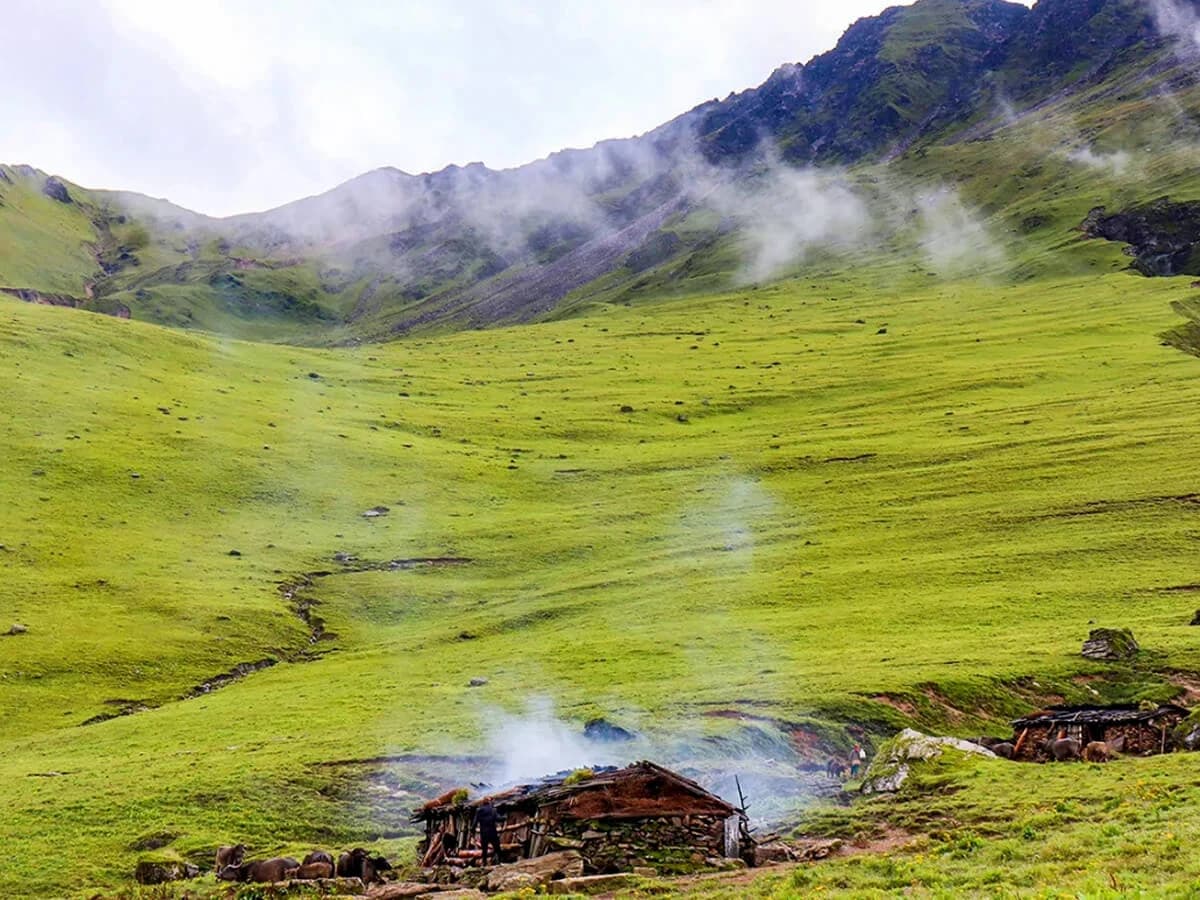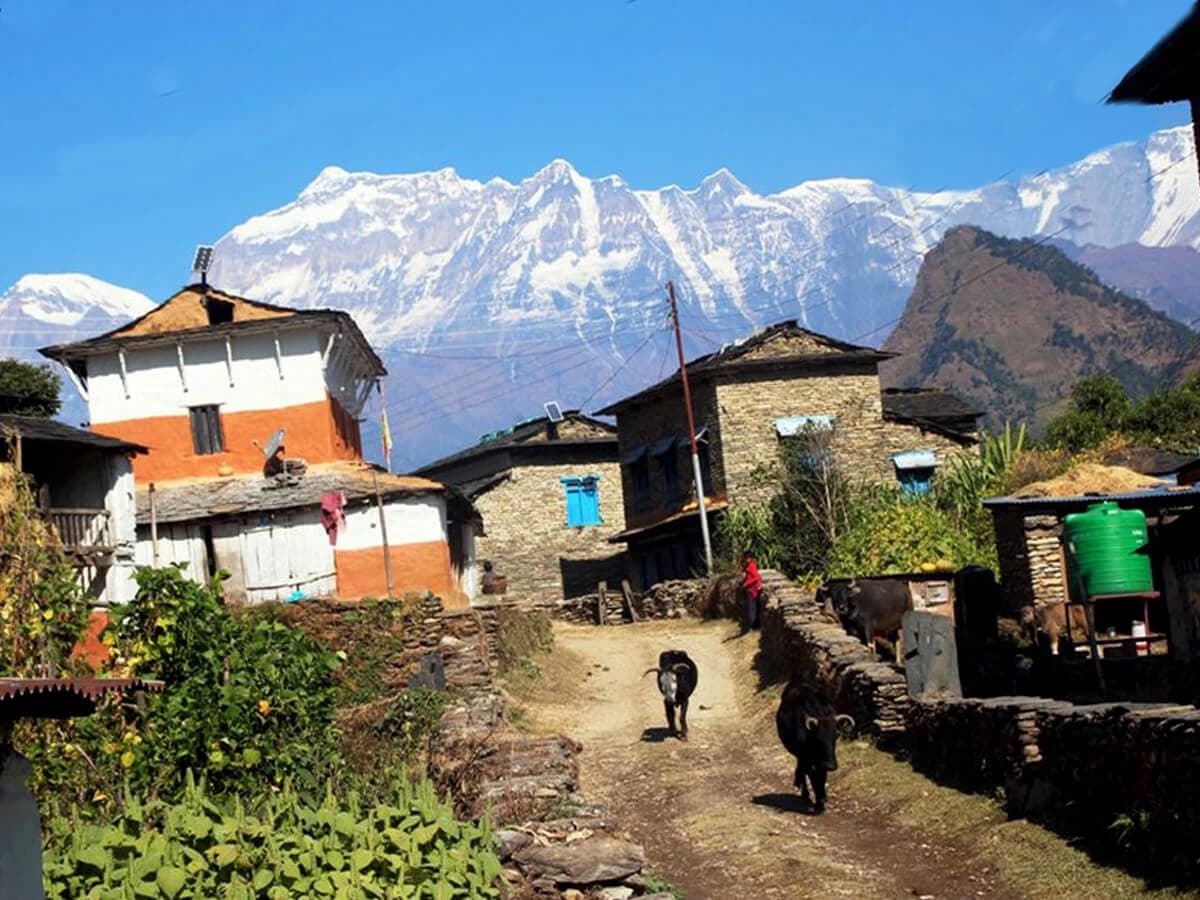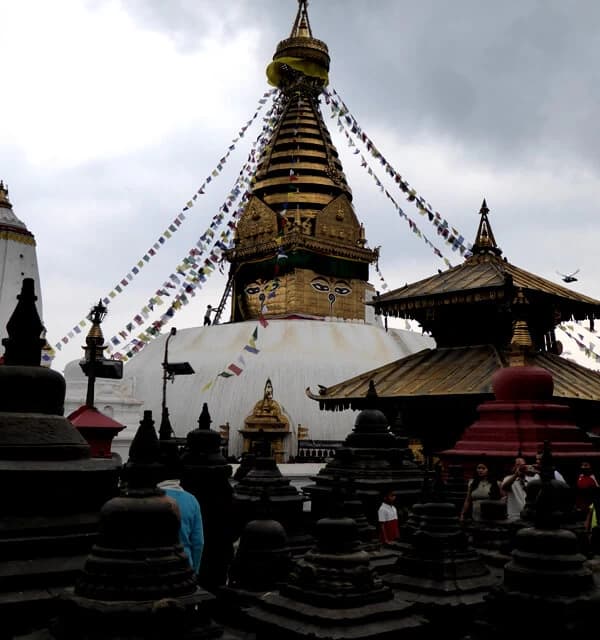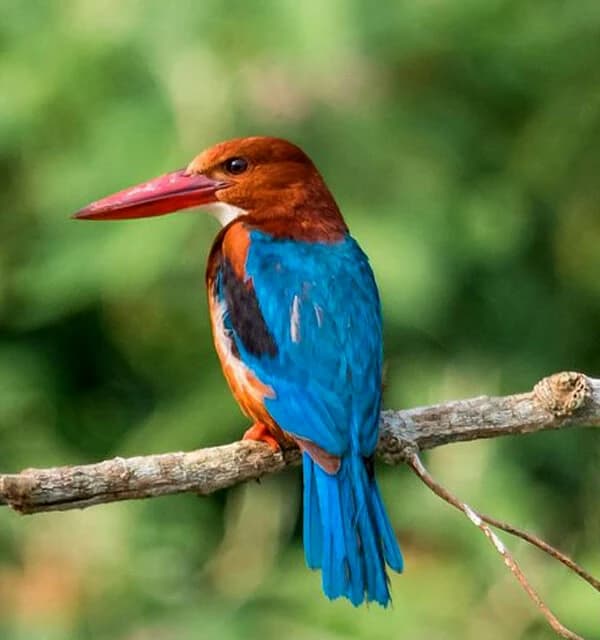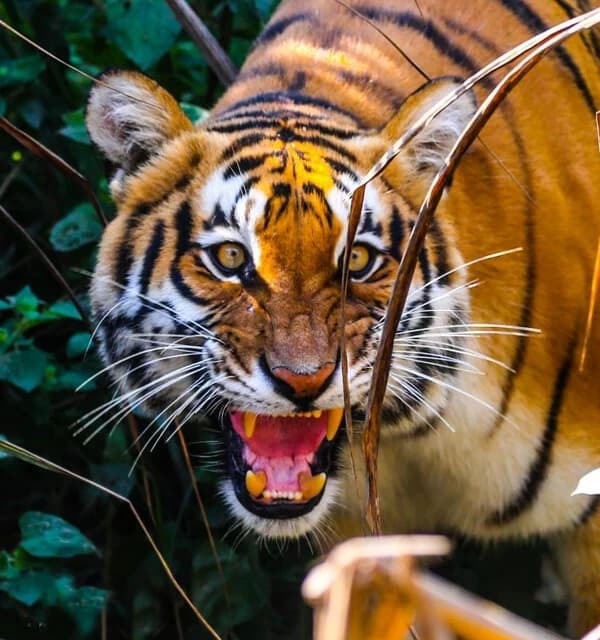One of the most thrilling and off-the-beaten trek of Nepal, known as the Gurja Himal Trek. Spend and explore the Himalayas and hills of Nepal for 11 days in Gurja via Baglung. A cultural exploration of Nepal’s ethnic groups like Magar and Chhantyals.
Gurja Himal Trek via Baglung - 11 Days
Overview
The Gurja Himal trek, one of the most thrilling and adventurous trekking regions in Dhaulagiri. Located in the western central part of Nepal, between the Annapurna Conservation Area and Dhorpatan Hunting Reserve of the Dhaulagiri Zone, the Gurja Himal Trek is an underrated off-the-beaten-path trail in Nepal. The trek usually follows from Baglung’s small towns and local markets bustling with villagers from across the hills to uncharted villages, pasturelands along the Himalayas. Showcasing the transcendent natural and cultural beauty of the indigenous, this trek is quietly overwhelming.
Gurja Himal Trek – Off-the-beaten-path trail
The weight of the options can be restraining; Nepal is a country of trekker's paradise with countless trekking routes and destinations, and you might be wondering why to choose the Gurja Himal Trek? So to clarify, this trek is for those who already have multiple trek experiences in Nepal and want to travel somewhere quiet and out of reach from the usual. It can also be a go-to option for such trekkers who don’t want to live in the hype and trek places in their initial raw phase.
The Gurja Himal Trek takes you off the beaten path from the usual popular trekking routes. Due to its unknowingness among common trekkers, Gurja Himal is quiet, alone, yetcharming in its own way. The trek starts with a day-long drive to Baglung-Pokhara from Kathmandu, passing small highway towns and markets. The trek officially kicks off from Baglung, along the river and gigantic hills to small pasturelands or passes near Gurjaghat and Gurjakhani. Gurja Himal Trek not only offers a scenic view of Dhaulagiri from the viewpoint and passes but also showcases the remoteness of the local villages like Gurja Village and Pachhim Gaon. This trek takes you gradually through changing vegetation and civilization from city to town and village communities. Unlike other regular, well-developed treks of the Annapurna Region, this trek feels like the whole time has stopped, or rather, loops. The paths, nature, culture, and way of living take you back decades of human development. The trekking route usually follows the trail of local travelers and shepherds in high passes with homestays and teahouses as accommodation. To summarize, why the trek is considered off the beaten path: -
- Under popularity among common trekkers.
- Few visitors every season.
- Less development in trails, accommodation, and food.
- Nature remains wild, and less disturbed forests, rivers, and wildlife are more pristine.
- The routes involve more rugged paths, limited infrastructure, and fewer marked trails.
- Locals living their traditional lifestyle rather than catering to tourists.
Is Gurja Himal Trek right for you?
If you are looking for a rough, raw, and yet equally rewarding trip, then yes, Gurja Himal is for you.
To know if a certain trek is right for you, what that trek offers, the condition of the trails, and most importantly, what you want to get from the trek needs to be noted. The Gurja Himal Trek is a euphoria for those who seek traditional trekking, live among indigenous people, experience local culture and cuisine, and want to learn traditional lifestyle in village areas. To make a clear contrasting difference, let’s get into the history of trek development and the different phases of developed trek.
Nepal has been a hub for international travelers since the 1950s, especially after the 1953 Everest summit. After the 1980s, as hippie culture faded, Nepal became known more for adventure and trekking, and after the 1990s, it’s been evolving ever since. The main reason for the popularity of trekking in Nepal is the diverse culture and fantasy-like landscapes. It was not only the gigantic snowcapped mountains but also the local hospitality of the people in their own historical way that made trekking popular in Nepal. Travelling in Nepal, especially in the Himalayas, is a whole different experience from normal treks. The people, culture, nature, infrastructures, and everything about Nepal are quirky in their own way. With time, trails, lodges, and facilities were developed, changing it to luxury travel. But the Gurja Himal Trek to this day feels like the time itself stood there and is admiring the beauty of nature and cultural blend. The architecture in villages, stone-paved paths, walls, and homestays with traditional tile roofs, with the beauty of the Chhantyal and Magar communities living since ancient times. So, if you want a trek with remoteness and comfort, this trek is for you.
Best time to trek the Gurja Himal
Trekking in Nepal is done during its peak seasonal months, from March to May and September to November. The reason is the stable weather and dry trails during these months which are perfect for an adventure like a trek.
Nepal offers numerous trekking routes, each one unique. From high passes to expeditions and wilderness treks, every trekking region is known for its own beauty. To get the most out of the trek, planning the trip at the right time is crucial why? Weather in the Himalayas is unpredictable and really unstable in the off-season. Extreme rain can have a ripple effect, slippery trails, hail, and heavy snowfall, which makes trekking in high passes nearly impossible. The best course of action would be to plan the trip during the seasonal time. There are multiple reasons why these golden months are chosen as the peak season, and it is not confined solely to weather conditions. So, let’s break down the seasonal time and what travelers may get during these seasons: -
March – May / Pre-monsoon (Spring season)
- Warm days make trekking satisfying.
- Less haze makes mountains visible in the early morning.
- Colorful forests of different rhododendrons.
- Dry and safe trails.
- Seasonal festivals in cities and villages.
September – November / Post-monsoon (Autumn season)
- Clear and crisp weather makes mountains visible.
- Stable weather and safe trails.
- Forest with golden and reddish hues.
- Coincides with major festivals like Dashain and Tihar.
- Warm days and cold nights in the Himalayas.
- Ideal time for trekking and other activities.
Most trekkers prefer these two peak seasons for their adventure-friendly weather conditions. Though the Gurja Himal trek is also possible to do during the monsoon season, it is not recommended, as monsoon treks follow slippery trails, leeches, and unstable weather. But those who are curious about doing a trek in the monsoon can follow the given link for more information on what treks can be done in the monsoon. Best monsoon treks in Nepal.
How difficult is the trek?
Trek difficulty varies with different factors such as the number of walking days, altitude reached, trail conditions, weather, and facilities. A trek can be long, but a shorter trek might be even harder when compared. So, in short, the Gurja Himal trek can be a bit difficult even though the maximum altitude is 3850M above sea level.
Our standard itinerary of Gurja Himal starts from Baglung at 970M, and gradually increases to high passes like Gurja Pass, Sole lek Pass, and Rugachaur Pass. The walking days are for ten days, as you spend the whole day on a bus for the first day of the trek. Accommodations are mostly teahouses and homestays provided in village areas and campsites, so food can be basic and mostly local. As this trek is considered a bit off the beaten trail due to less overall development, it can be hard for those who prefer a bit of luxury during their stay and travel. The trek is only recommended for those who are ready to face the remoteness and rawness of the underdeveloped treks and are comfortable with basic lodgings and food.
Facilities in Gurja Himal Trek!
Accommodation and food: - Just like mentioned above, when it comes to facilities such as lodging and food, it is not consistent throughout the trek. Food and accommodation are relative; different places offer different service levels. It all comes down to how developed the transport infrastructures are. But a common rule is that the higher you go, the less luxury there is. The farther you trek from the developed areas, the lower the luxury is. And facilities in the Gurja Trek are more geared towards a traditional style. So, keep expectations a bit low for your own happiness.
Transportation: Our package deal of 799 USD per person for two people booking includes transportation costs for your pickup from the hotel in Kathmandu to the local bus station and bus fare to and from the starting point. A private Jeep can also be arranged at extra cost with prior notice.
Gurja Himal trek guide and porter cost
When trekking through an authorized agency like Wilderness Excursion, trek guides are included in the cost. Trekking in Nepal is more comfortable and safer when you have a guide and an agency that is both accountable and responsible. Though it is possible to do a trek on own with proper gear and needed travel documents, booking the trip through an agency is recommended by the government as well.
Our inclusive package deal also includes one porter for two trekkers with a weight limit of 25kg. Hiring additional guide and porter costs from 20-25USD per day, from the trek beginning to ending in accordance to itinerary.
For more information regarding the guides and porters of Nepal, follow the link.
Highlights of Gurja Himal Trek
The Gurja Himal trek is known for traditional and isolated trekking. The trek features a panoramic view of Gurja Himal and the Dhaulagiri Range with a mix of cultural beauty of the Chhantyal and Magar people. The Gurja Himal trek doesn’t directly fall inside the Dhorpatan hunting reserve, but it lies close to the Dhaulagiri Conservation Area, meaning wildlife and biodiversity are still rich and undisturbed. Home to the Himalayan Tahr, Red panda, Himalayan musk deer, Goral, and different bird species like Blood pheasant, eagles, and vultures. The surrounding area of Gurjakhani is covered with dense rhododendron, oak, and pine forests and higher base camp areas with beautiful alpine meadows for grazing yaks and sheep.
Vegetation in Gurja Himal
The vegetation in the Gurja Himal trek changes beautifully with altitude.
- Lower Region (1800M-2800M): Dense rhododendron, oak, and pine trees mixed with maple and bamboo groves. In spring, rhododendron bloom in red and pink across the hillsides.
- Middle Region (2800M-3500M): The forest thins into juniper, birch, and fir trees. Mosses and lichens grow thick, especially in shaded, humid areas.
- Upper Region (above 3500M):alpine shrubs, dwarf rhododendron, and grasslands used for grazing by yaks and goats.
Wildlife in Gurja Himal
The Gurja Himal area supports wildlife typical of the Dhaulagiri Conservation landscape:
- Himalayan Thar, musk deer, blue sheep, and sometimes goral in the higher ridges.
- Himalayan black bear, red panda, and langur monkeys in the forested regions.
- Birdlife includes Himalayan monal (Danphe), blood pheasant, snow partridge, eagles, and vultures.
- At night, foxes and martens can be heard or spotted near villages.
Cultural Aspects of Gurja Himal Trek
The Gurja Himal trek area is inhabited by the Chhantyal and Magar communities. Magar people are the main inhabitants of Gurja Khani and the surrounding villages (like Lulang, Darsinge, and Dhorpatan area). They’ve lived there for generations, practicing traditional agriculture, animal herding, and seasonal migration for work.
The Chhantyal community mostly lives in Malika Rural Municipality and Myagdi District areas, particularly around Narchyang, Dana, and Rum, which are on the opposite side of the Dhaulagiri range (closer to the Kali Gandaki valley).
Magar Community (Gurja Khani area)
- The Magar people are the main inhabitants of Gurja Khani and the nearby villages of Gurja Himal.
- They are one of Nepal’s largest and oldest ethnic groups, believed to have settled in the mid-hill and high-hill regions for centuries.
- Their lifestyle is agro-pastoral, meaning they grow crops like barley, maize, and potatoes, and raise livestock such as yaks, sheep, and goats.
- They follow nature-based beliefs mixed with Buddhist and shamanic practices.
- Major festivals include Maghe Sankranti, Loshar, and Dashain.
- Magar villages are known for their stone-roofed houses, folk music, and traditional dances like Maruni and Kaura.
- Their warm hospitality and deep connection to the land are key highlights for trekkers visiting Gurja Khani.
Chhantyal Community (Western Dhaulagiri side)
- The Chhantyals live mostly in Malika and Dhaulagiri rural municipalities of Myagdi District, on the western and southern slopes of the Dhaulagiri range — especially around Narchyang, Dana, and Rakhu.
- Historically, known as iron miners and metal workers, making tools and ornaments is an identity that’s still part of their culture.
- Many have now turned to agriculture, herding, and tourism work.
- Chhantyal speak their own language, distinct from Nepali.
- Festivals include Dashain, Tihar, and Chhantyal Mahotsav.
This is our standard itinerary. It can be customized or slightly changed if required considering your pace and trekking habit that cause a change of day-to-day plan.
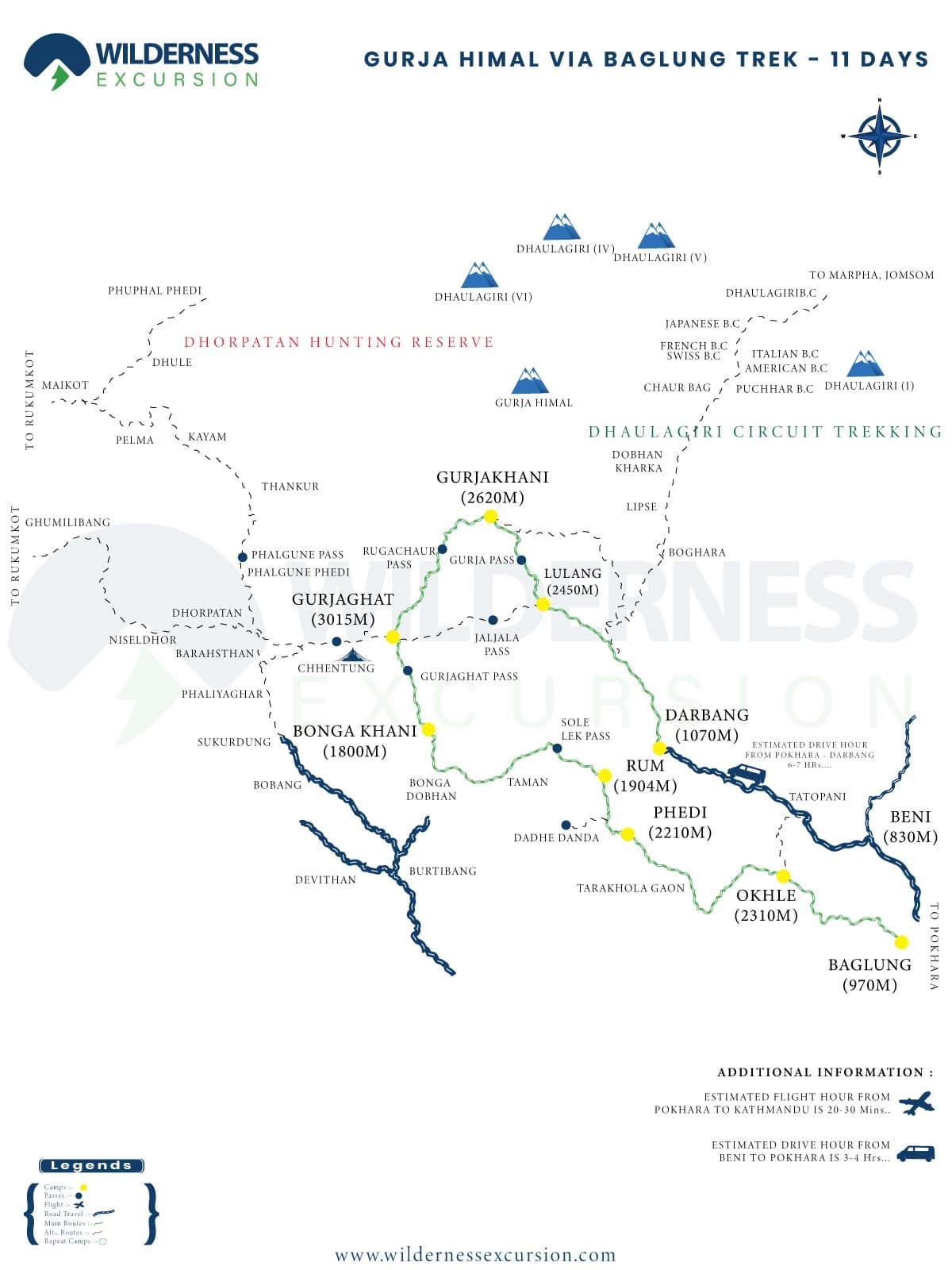
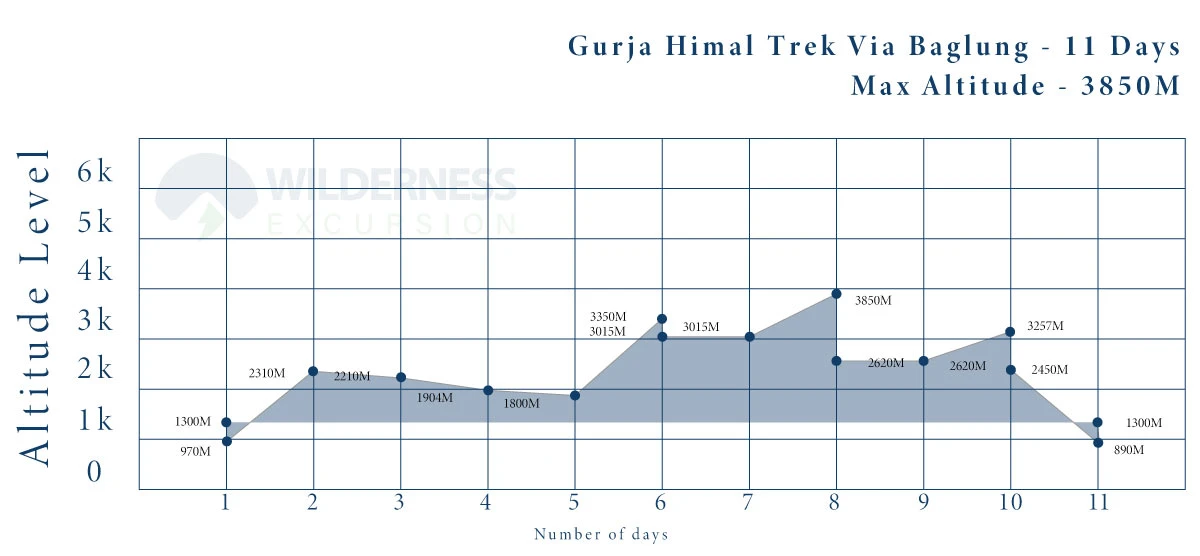
- All accommodations in lodges/tea houses during the treks.
- Local ground surface transportation to/from trekking.
- Pick up from your hotel in Kathmandu and transfer to local bus astation.
- All meals stated in the itinerary.
- ** Breakfast x 10
- ** Lunch x 11
- ** Dinner x 10
- One local experienced trekking guide will be provided during your trek.
- One sharing porter to carry luggage between 2 trekkers (weight limit 25kg)
- Salary, accommodations & meals for trekking crew.
- First aids kids, water purified tab & all necessary in the mountains.
- Conservation area fees if required.
- 23% tax and vat (Government tax and service charge).
- Accommodation, meals and transportation in Pokhara and Kathmandu.
- Bar bills, beverages such as coke, can juice etc.
- Personal nature expenses, toiletries, laundry, trekking gear.
- Travel insurance and rescue operation in case of emergency.
- Porter and horse ride if needed.
- Gratitude and tips for guide, porter (tipping is not mandatory but expected).
Check our published date! If it doesn’t match, we are happy to customize your tour perfectly to suit your interests and needs. Contact us for creating a unique travel experience for you
Permits and Entry Fees
The trekking routes in Nepal are all under protection from the Nepalese government. Some may fall under the national parks, hunting reserves, conservation areas, and special restricted areas. Each section and region has its own law and permits.
For conservation areas, permits go as ACAP(Annapurna Conservation Area Permit), GCAP (Gaurisankhar Conservation Area Permit), and MCAP(Manaslu Conservation Area Permit).
Likewise, there are multiple national parks and local communities, and trekkers are required to take the necessary permits and tickets in accordance with the itinerary and from where the routes go. For more information, follow the link given below: -
Nepal Tourism Board (NTB): - Trekking permits
Wilderness Excursion: - Trekking permits and fees
Packing and preparation tips
When trekking, packing methods may differ depending on what kind of trek you are doing and for how long. In the case of the Gurja Himal trek via Baglung, which lasts for 11 days, some necessary packing and preparation are needed.
Clothing and gear
- 20L trekking bags and a duffle or separate trekking bag for the porter.
- From top to bottom, caps, glasses, buff, windbreaker, gloves, trek pants, and boots.
- Layer clothing, light full sleeves, and windbreakers for the day.
- Down jackets and puffers for the night.
- An additional pair of socks and gloves.
- Sandals and crocs (if needed).
Essentials and additional
- Rain essentials like raincoats, rain covers, and waterproof jackets (for monsoon season).
- Minimum 2L water bottle and water purifiers (if needed).
- Portable first aid kits and additional medications (if needed).
- Personal items like toiletries and sanitary items.
- Portable backups for charging and headlights.
- Snacks, energy bars, and cards for entertainment (if needed).
- Personal sleeping bag or liner.
Useful tips
- Carry extra cash for personal use. Lodges in the Himalayas may provide onlinetransaction services, but they’re not available throughout the trek.
- Always pack light and smart.
- Avoid cotton clothes when trekking during the day.
- Consult with the guide in the field if an unusual, persistent headache or any symptoms are shown.
These are only a few of the useful tips when trekking and on how to prepare. If you have more practical ideas, then you may apply your own methods as well. If you are a beginner, then you may follow the given link for more information on how to prepare.
Travel Safety Information
Nepal is considered a safe country for tourism, especially the Himalayas, which is accustomed to international and domestic travelers alike. The local hospitality of the communities, and due to tourism centralization, even remote areas treat trekkers as guests and not only customers. But there are still multiple safety preparations that are needed before departing for a trip for a successful and safe return.
- Take the necessary conservation and national park permits for the trek route you are taking.
- Always have travel insurance.
- Save the government emergency contacts of police, ambulance, and the related embassy.
- Carry pepper spray.
- Never separate from the main group.
These few tips can be useful for those who are thinking about doing the trek alone or without being associated with a registered travel agency. So, for easier planning, contacting an agency and booking through an agency like Wilderness Excursion (P) Ltd is safer since you are provided with professional trek guides, and permits are well taken care of before departure. You are tracked throughout the trek, like where you reached, your health conditions, for a safe and sound return.
If you would like to have more information on a successful trip, follow the link given.
Yes, the itinerary provided on the website is a standard one but not mandatory. You can customize the trip in accordance with your own needs. But cutting more days than required and doing hyper trekking is not recommended, since it can have quite opposite consequences. Consult with the agency about the possibility of avoiding possible chances of altitude sickness and other health hazards.
Yes, as the trek can be shortened, it can also be extended with proper rest days added to the itinerary. If you have any other demands, like you want to make a stay a bit longer in a village, then you may consult about it with the agency before departure.
Well, it is possible to connect the trek with other major routes as well, but it can be tight. Joining the route within Dhaulagiri is reasonably possible, like a trip to Dhaulagiri Circuit Trek or maybe to Dhorpatan Hunting Reserve. If you did like it, we already provide a package trip of Gurja Himal Dhorpatan Trek as well.
The cost will also change in accordance with changes made. If you only shorten the standard itinerary given, then it might cost you a bit less, or when extending a day or two, it will cost a bit more. But when you connect the route with other major destinations, like to Dhaulagiri, it can be costlier, since you will not only be extending the same trip and other factors will also change the cost. So consult with the agency in advance.
The lower region, or the area around Baglung and Beni, may support online payment and facilities like wifi and mobile towers and all, but it can't be said to be the same once you start the trek. Some places may not even have electricity and only accept cash as payment. So, we advise you to carry local currency, which is Nepali Rupees, for extra expenses and personal needs.
Bank services and ATMs are only available in the city areas and towns that are moderately developed. Even in towns, it might not be possible to have ATM services for every bank might be limited in number. So, the best option would be to withdraw certain amount of local currency in Kathmandu before the day of departure.
The Gurja Himal Trek is an off-the-beaten-path adventure through the stunning Lower Dhaulagiri region, offering breathtaking mountain views, remote villages, and a glimpse into a unique Nepalese culture featuring the highlights of Gurja Khani village and Dhorpatan—a scenic and culturally rich route passing through Gurja Khani Valley and the...

